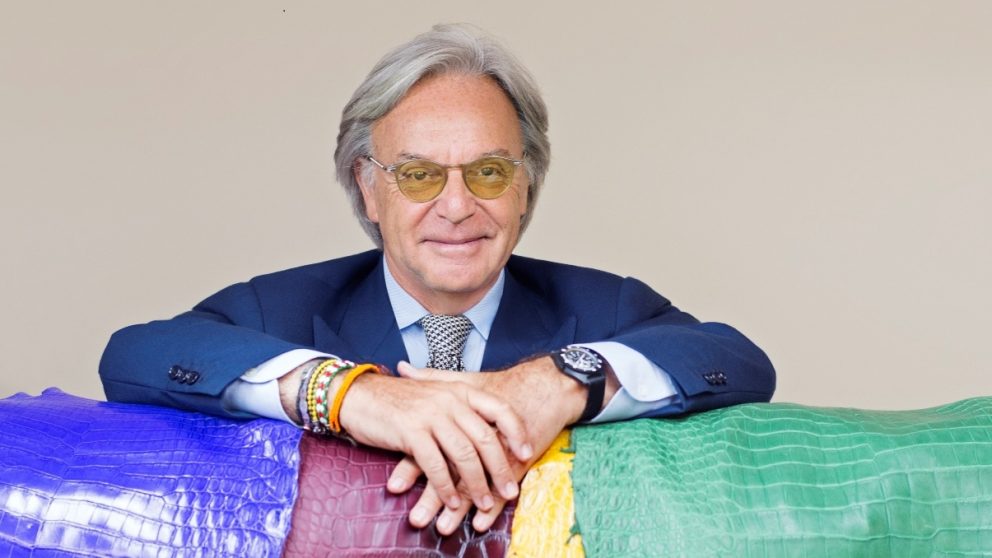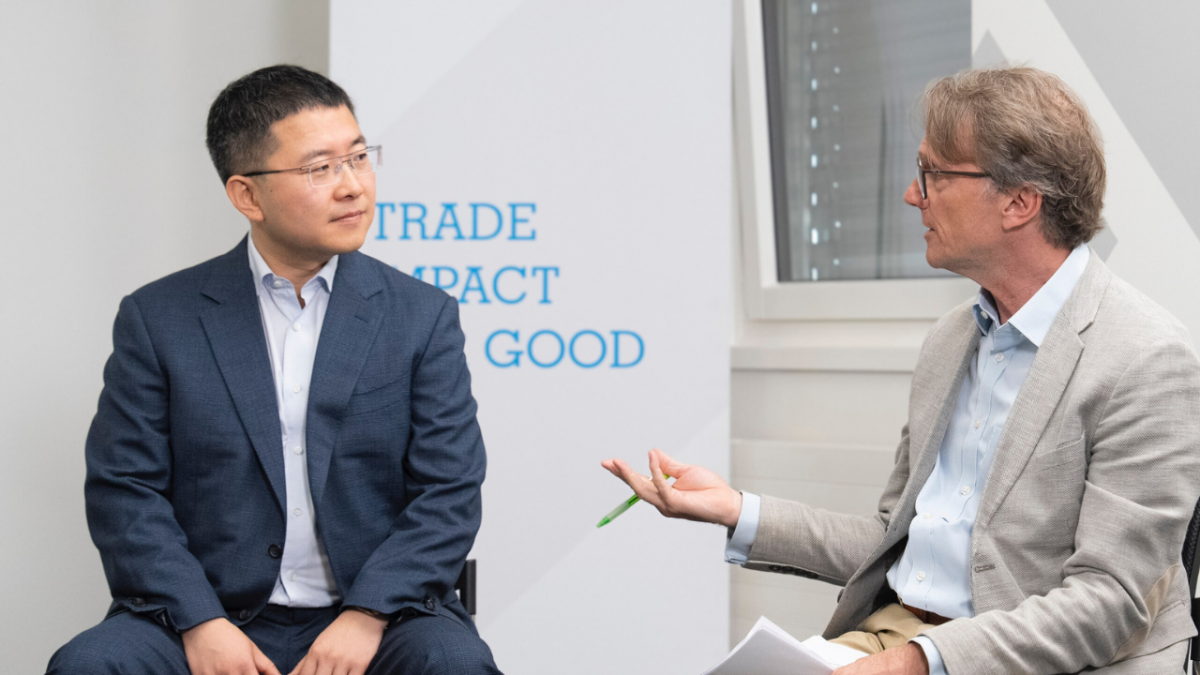


Diego Della Valle. Photo credit: Emanuele Scorcelletti
Diego Della Valle, chairman and chief executive of Italian luxury group Tod’s, sees digital shopping as a way for global luxury brands to stitch themselves into growth markets.
Della Valle is courting the burgeoning number of Chinese and Generation Z consumers as he seeks to turn the century-old shoes, accessories and apparel group into a profitable enterprise.
Tod’s saw its revenues rocket in China during the first half of this year, even as the group grappled with the impact of the coronavirus pandemic in other parts of the world. Tod’s executives say the family-controlled firm is just getting going in the world’s largest consumption market.
“China is helping the balance sheet of many companies in our sector…We see it as a starting point as we can do so much more in China,” said Della Valle during an exclusive interview with Alizila. Della Valle also sits on the board of LVMH, a global leader in luxury.
Consultants at Bain & Co forecast that China will likely be the planet’s biggest luxury market by 2025, overtaking the U.S. as more Chinese shop in their domestic market than travel overseas. China is also one of the world’s most innovative retail markets where digital-related sales represent a growing proportion of total sales through applications such as e-commerce livestreaming and omnichannel retail.
“Luxury brands need to serve Chinese consumers in China and adapt to their way of shopping,” Bruno Lannes, a consulting veteran of 15 years in China and partner at Bain & Co, told Alizila.
Tod’s, in which LVMH owns a 10% stake, is ahead of the trend. Greater China overtook Italy to become the company’s biggest market in terms of sales last year.
“The tool par excellence in the future will be e-commerce,” said Della Valle during the interview at Tod’s headquarters in Brancadoro, in Italy’s Marche region near the Adriatic Coast.
“Over the last year, e-commerce has been used more because of the great world tragedy but also because it is more practical, easier and young people are often a little shy,” he said.
The industry markup in China is its highest globally. To be sure, brands have to consider the cost of penetrating China’s complex and competitive marketplace, but the Middle Kingdom remains very high on executives’ To Do lists.
A STITCH IN TIME…
In 2017, Diego Della Valle made a bold move. He took Tod’s online in China by joining e-commerce giant Alibaba Group’s Tmall Luxury Pavilion. Tmall’s marketplace showcases top international fashion brands to China’s high-end shoppers.
Since then, the firm has added two other brands, Roger Vivier and Hogan, to the platform as well as embraced livestreaming product campaigns and exclusive product launches on Tmall.
Some of Tod’s executives were cautious at first about selling luxury via e-commerce. Tod’s keeps a tight rein on expansion and distribution so as not to damage the brand’s image of exclusivity, with particular attention paid to the quality of the point-of-sale.
“At the beginning, there were some reservations among our people: maybe yes, maybe no. The feeling was we should treat the product delicately and it should not be too widespread,” said Della Valle. However, he took matters in hand personally.
“I just called some people I know in China, people with significant purchasing power, and I asked them if they would buy on Tmall. “Why not? We buy a lot of stuff on Tmall as it is important for us to have that thing we want at home as soon as possible,”” he said.
Della Valle said the company’s Chinese staff helped smooth the firm’s market entry and helped overcome challenges.
“In China, people are very quick to decide, and expect you to act fast too. Adapting to the speed of China’s market was essential; and it served to improve our efficiency around the world,” said Della Valle.
While the family-controlled firm is still loss-making, Tod’s Greater China sales have surged. Greater China revenue leapt 110.2% to 156.2 million euros (US$183 million) in the six months to June, a bigger jump than other parts of the world. Sales were up 43.5% from the same period in 2019.
Sales in Greater China accelerated in the second quarter of the year compared to the first, even as the rest of the world still suffered from new infections, store closures and tourists’ absence.
Asian audiences have given a warm reception to Creative Director Walter Chiapponi’s new collections and direction, said Tod’s executives.
HOW CHINESE SHOP
As Chinese shoppers drive the global rebound in luxury sales, brands are seeking to understand this cohort of consumers in greater depth.
Empowered by swelling discretionary incomes, these buyers approach consumption with a cultural awareness and a concept of luxury that differs from Western consumers, according to Jing Daily’s latest report on luxury trends.
“They want to be able to have what they want as soon as possible and therefore selling it with your platform has allowed us to reach these people’s homes with a very efficient service,” said Della Valle.
That being said, Della Valle believes that any differences between Chinese and European shoppers are disappearing.
“Attitudes are merging with new generations, we could see in a few years that they will be absolutely very similar,” said Della Valle.



COURTING GEN Z
Generational differences are still quite stark as younger people are more at home with e-commerce and are more likely to discover and purchase luxury goods online. Chinese Gen Z consumers spent, on average, five hours a day on mobile devices last year, 10% longer than average, according to iResearch.
Tod’s has made a concerted effort to get closer to younger audiences. Street art has inspired Tod’s Graffiti capsule collection, which included graffiti-like handwritten messages and drawings by Chiapponi.
A 2019 survey by PwC’s strategy arm and streetwear publication Hypebeast found that 20% of Chinese consumers spent between $300 to $500 on streetwear per month, compared to just 11% of North American and European consumers.
Tod’s has also appointed fashion influencer Chiara Ferragni to its board in April to build solidarity and to support sustainable projects, raising awareness and especially involving younger generations.
Of the 757 million annual active consumers who shop on Alibaba’s marketplaces, including Tmall and Taobao, the majority are millennials and Zoomers. Gen Z make their first luxury purchase at age 20 on average, and they place greater emphasis than other generations on the “pursuit of fashion” as a reason for purchasing luxury goods.
“Since young people are often a little shier, it [e-commerce] also brings us a younger clientele who have a few things sent to their home,” said Della Valle.
Tod’s executives don’t see China’s Common Prosperity drive impacting the behavior of most Chinese middle-class shoppers over the long-term.
Although there could be some pause for thought in the immediate future as people seek to understand the complex nuances of the policy.
“We could consider more likely some sort of psychological impact in the short term – much more than in the longer one,” said Emilio Macellari, Tod’s CFO.
The Italian fashion house tracks the nationality of its clients, not just shoppers’ location, and Chinese nationality buyers have recorded structural growth month after month, despite the number of Chinese tourists’ overseas plummeting.
BEST FOOT FORWARD
Across the luxury industry in China, while physical stores remain the biggest point of sale, most of the marketing budget is now spent on engaging with consumers online.
Tod’s is weaving the e-commerce experience together with its physical stores so that customers will have a unified experience across all distribution channels. Tod’s Group, listed on the Milan Stock Exchange, has 80 directly owned stores in mainland China as of June 30.
Tod’s expects to implement its omnichannel strategy in all of its markets by the end of the year.
Della Valle sees the luxury industry quickly mastering the complex matrix of possible ways an individual can engage with retailers and following suit.
“Within a year or two, we will all have better assimilated this concept and I believe it will bring all of us great benefits,” said Della Valle.



“MADE IN ITALY” BOUGHT IN CHINA
Filippo Della Valle, Diego’s grandfather, set up a small shoemaking workshop in the late 1920s. Della Valle joined his father in the family shoemaking business in 1975. He developed an innovative marketing plan that masterminded the global expansion of the family business.
“We are all happy that the product comes out of Brancadoro and goes directly to the homes of our Chinese consumers. This is magic, if I think about 40 years ago how many intermediate steps there were. We consider all this a huge opportunity,” said Della Valle, who was born in Le Marche in 1953.
Now Della Valle sees the growth in Chinese e-commerce as an opportunity not only for the luxury, but for entrepreneurs running small and medium-sized businesses across Italy, such as skilled vase maker in Florence who could sell to Chinese consumers via platforms such as Alibaba. Italy officially became part of China’s Belt and Road Initiative promoting trade between the two countries in 2019.
“No one would have thought 15 years ago that today we would have a world so fast and so full of opportunities linked to Asia,” said Della Valle.
To receive the latest news directly in your inbox, sign up for the weekly Alizila newsletter





